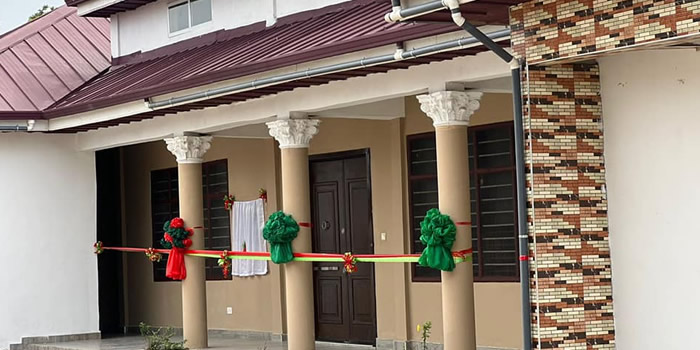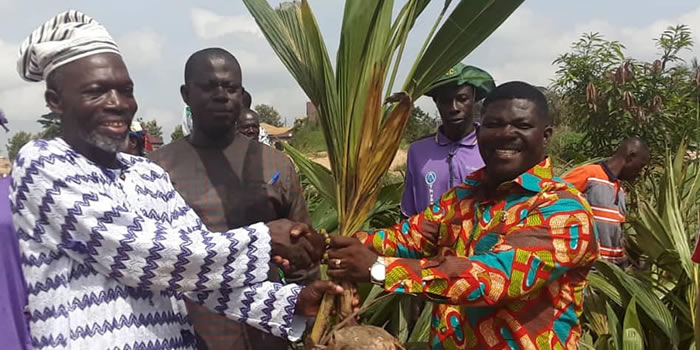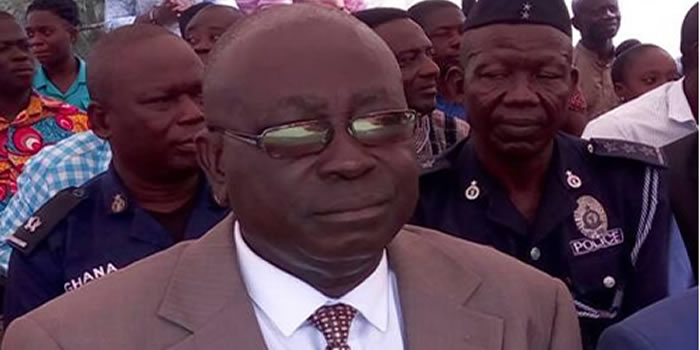

The Afigya-Kwabre District Assembly was established by Legislative Instrument (L.I.) 1885 of 1st November 2007. It is one of the Thirty (30) and also the Two Hundred and Sixteen (216) Metropolitan/Municipal/District Assemblies in Ashanti and Ghana respectively. It was carved out of the former Kwabre and Afigya-Sekyere District Assemblies, and has Kodie as its Capital.
The Assembly is a legal entity which can sue and be sued. It is an autonomous entity to some extent and can take its own decisions within the framework of government policies.
By law, the assembly meets at least three (3) times a year upon a call to meeting by the Presiding Member. The assembly has eight (8) sub-committees namely:
- Justice and Security
- Development Planning
- Finance and Administration
- Environmental
- Social Services
- Agricultural
- Public Relations and Complaints
- Works
All these sub- committees report to the Executive Committee.
The District Administration
At the District Administration level, there are eleven (11) decentralized departments that work hand in hand with the central administration towards the overall development of the district. The following Decentralized Departments as prescribed by Act 462 can be found in the district.
- General Administration
- Finance
- Education, Youth and Sports
- Agriculture
- Physical ( Spatial) Planning
- Social Welfare and Community Development
- District Health Department
- Works
- Disaster Prevention
- Migration Service
- Birth and death registry
- Commission on Human Rights and Administrative Justice
However, with the implementation of the Local Government Service ACT, the following departments ceased to exist (Table 1.18).
Currently, all the departments are housed in rented premises with some combined in the same office. The central administration itself is located on top of the offices of a Total Filling Station. The location is indeed not convenient for effective service delivery. The situation of staff and logistics is not the best. These departments need to be strengthened with requisite staff and the needed logistics for a concentrated development of the entire district.
Sub-District Structure
The District has 8 Area Councils (table 1.19) with 72 Unit Committees and 30 Electoral Areas and 2 Constituencies.
All the area councils except one ie. Kodie, in the district have offices which were either built by the District Assembly or provided by the community. The lack of staff to man these offices has gradually reduced some of them to just a name. In a bid to revamp the activities of these councils, National Service Personnel should be assigned to manage the day-to day activities of the office. The Councils’ offices must be provided with basic office equipment. The Community Based Rural Development Programme (CBRDP) should however be applauded for its role in the training of members of some selected area councils and the development of plans for these area councils.
Political Structures
For the purpose of Local Government, the District has two (2) Constituencies namely, Afigya and Kwabre West Constituencies. There are Ninety-five (95) settlements in the District, which have been delineated into Thirty (30) Electoral Areas for the purpose of District Assembly Elections. The Assembly has 45 Assembly members comprising 30 elected, 13 appointees and 2 Members of Parliament. These are made up of 6 females ie 13.3% and 39 males ie 86.7%. This highly skewed situation is unacceptable and for that matter more women should be encouraged to participate in issues of the Assembly.
The Assembly is responsible for the overall development of the District as per the provisions under section 10 of the Local Government Act, Act 462, of 1993. It is also responsible for the formulation of programmes and strategies for effective mobilization and utilization of human, material, and financial resources to improve upon the quality of life of the people in the District
The District has dual characteristics, which include; Peri-Urban features around the fringes of Kumasi and rural features in the hinterlands. Many constructional activities are being carried out in the District as a result of the fast growing nature of Kumasi, the Regional capital. The key economic activities in the District are stone and sand winning, farming and commerce.
Due to the rapid expansion of settlements and constructional activities and increasing population in the District, there is considerable pressure on the existing limited socio-economic infrastructure in the District, which needs to be improved upon. The Assembly also has an arduous task in the area of solid waste management, especially in the emerging larger communities like Atimatim Afrancho and Buoho.
Traditional Set-Up
The district has no paramount Chief in the Kwabre section of the District. The Chiefs in the communities serve directly under the Asante King. Those in the Afigya section of the District serve the Mampong Silver Stool.
Justice and Security
The District has enjoyed a stable and peaceful environment since its creation. This has been made possible due to the cordial relationship that exists within and between the communities and the District Assembly. The District has a well composed District Security Committee (DISEC) which oversees all security issues in the District. The District has four (4) Police Stations located at Kyekyewere, Tetrem, Boamang, Ahenkro and Kodie. All the Police Stations are found in the Northern portion of the District.
Another police station has been opened at Ahenkro. Additionally, efforts are being made to beef up security personnel in the district and also the opening of additional police station at Atimatim and other areas. Through the effort of DISEC, District Police Command and communities, watchdog committees are being formed to arrest the insecurity situation in the district. Recently, there have been reported cases of armed robbery in some parts of ht district. The DISEC in collaboration with the police and watch dog committees have mounted patrols and checks to arrest the situation.
The District also has one (1) District Court located at Kodie, the District capital.
Accountability
To ensure accountability and transparency in the District, the following committees have been established to oversee procurement of goods, works and services. They are:
- The District Tender Committee
- The District Tender Review Board
- The District Purchasing Committee
- The District Tender Evaluation Committee
- The District Public-Private Partnership Committee
All these Committees are functioning as prescribed by the Public Procurement Act, ACT 663 of 2003 and other government directive.
Citizenry Participation
For effective development in the district, there is the need for citizenry participation in decision making and implementation. In this light, the district involves the citizens in the development decision making and implementation through, for instance, community durbars to identify problems and strategies to fulfill the development agenda of the District Assembly. Again, Communities participate in the payment of counterpart funds for projects like water, sanitation etc. which are mainly donor supported.
In line with the above, public hearings on the preparation of the district medium term development plan are always held to solicit inputs from the people’s representatives. The representation at the public hearing include: Assembly, Unit Committee members, Area Council Executive, Nananom, Community Based Organizations, Civil Society Organizations etc.
Date Created : 11/10/2017 8:05:29 AM












 facebook
facebook
 twitter
twitter
 Youtube
Youtube
 +233 593 831 280
+233 593 831 280 0800 430 430
0800 430 430 GPS: GE-231-4383
GPS: GE-231-4383 info@ghanadistricts.com
info@ghanadistricts.com Box GP1044, Accra, Ghana
Box GP1044, Accra, Ghana